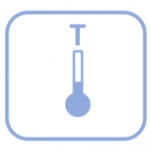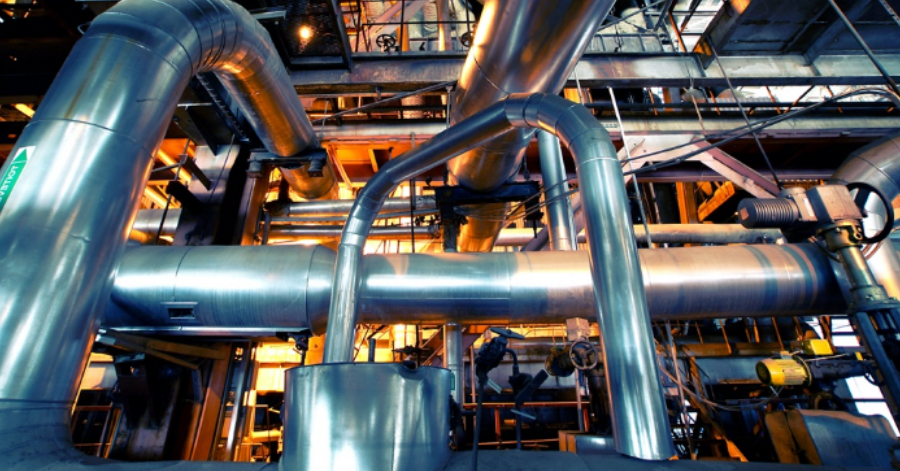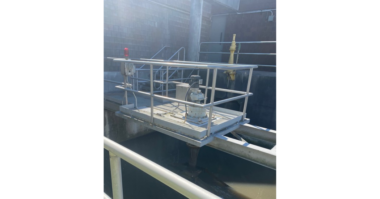Developing a well-run pumping environment requires foresight, planning and vigilance. Adding power monitoring to a pumping ecosystem improves safety and resiliency and enhances other condition sensors for a more complete picture of the entire environment.
Several key goals are universal for a well-run pump system:
- Ensure the environment is safe and protected from incident
- Develop and monitor process standards that align to high manufactured product quality
- Build in adaptability to respond to changing process requirements
- Enable insight into process parameters that indicate need for intervention, including maintenance and repair
- Deliver the best product quality with the highest energy efficiency and cost possible
A monitoring system that alerts to dry running cavitation and mechanical failure, provides valuable feedback on process status, flow and viscosity changes, and offers important insight to maintenance needs can deliver short-term payback and ongoing cost savings and process optimization benefits.
Pump power measurement can play a fundamental role in all these key elements and should be considered an important factor in pump subsystem design.
How does Power Monitoring Work?
Power, measured in HP or Watts is calculated from the electrical connections powering the pump’s motor. By multiplying Voltage X Current X Power Factor (loosely described as the energy required to charge the coils in the motor) we can get an accurate view of the work the motor is doing. This gives us a signal to monitor and control pumps:
- When flow rate is low, Power is low
- When flow rate is high, Power is high
- At light load conditions, caused by cavitation or dry running, measuring the change in Power is 10X more sensitive than Current (Amps) alone.

Measuring power requires no direct mechanical attachment to the pump or motor, and can be done in an environment (power distribution panel) free from potential manufacturing hazards such as the Motor Control Cabinet.
 Benefits of Power monitoring include real-time feedback on process status, flow and viscosity changes, dry running, cavitation, impeller loss, and other error conditions and maintenance issues
Benefits of Power monitoring include real-time feedback on process status, flow and viscosity changes, dry running, cavitation, impeller loss, and other error conditions and maintenance issues
Magnetically coupled, “sealless” or “canned” pumps are increasingly being specified for critical and environmentally sensitive pumping applications. These pumps offer a number of clear advantages, but since the bearings are now inside these pumps, a presence of fluid is needed to remove heat buildup. For some specific use case studies on protecting these pumps please refer to the scholarly article Mag Drive Pumps: Why They Work – How They Fail¹ and the article in the September 2020 issue of Pumps and Systems titled How Long Can I Run My Pump Dry? Both articles point out the challenges of these advanced pumps and recommend the use of Power sensors to monitor and protect them.
Power measurement can be used alone or as part of a multi-mode measurement program. Other techniques for monitoring pump status include:
Flow Meters
 Measuring flow can provide throughput and viscosity data, critical to understanding subsystem status. A potential downside—the most effective measurements are taken in the flow, leading to reliability and maintenance concerns. Flow Meters can also be costly to install. Leveraging flow sensors in addition to power measurement can be valuable when viscosity changes are important to pump efficiency. Both can provide rapid feedback on flow loss and impeller damage. Addition of power monitoring affords a second source of data, generated away from the process’ environmental hazards.
Measuring flow can provide throughput and viscosity data, critical to understanding subsystem status. A potential downside—the most effective measurements are taken in the flow, leading to reliability and maintenance concerns. Flow Meters can also be costly to install. Leveraging flow sensors in addition to power measurement can be valuable when viscosity changes are important to pump efficiency. Both can provide rapid feedback on flow loss and impeller damage. Addition of power monitoring affords a second source of data, generated away from the process’ environmental hazards.
Vibration Sensing
 Measuring vibration provides feedback on pump balance and bearing wear. Since vibration will increase with ongoing wear and misalignment, vibration sensing is commonly used in preventative maintenance programs. Ultrasonic vibration measurement can provide some insight into process state. Vibration sensing is typically easy to install, although may be more expensive than power measurement alternatives. They may also require physical access to the pump which may be problematic. The combination of vibration and power sensing over time can provide valuable insight into ongoing pumping costs and maintenance efficiencies.
Measuring vibration provides feedback on pump balance and bearing wear. Since vibration will increase with ongoing wear and misalignment, vibration sensing is commonly used in preventative maintenance programs. Ultrasonic vibration measurement can provide some insight into process state. Vibration sensing is typically easy to install, although may be more expensive than power measurement alternatives. They may also require physical access to the pump which may be problematic. The combination of vibration and power sensing over time can provide valuable insight into ongoing pumping costs and maintenance efficiencies.
Temperature Monitoring
 When implementing temperature sensing in pumping applications a decision needs to be made to measure temperature in flow, or pump/motor housing. Measuring temperature in flow is most accurate but will require ongoing maintenance. Housing-based solutions are simplest to install, but may suffer from accuracy and latency challenges, particularly in canned pumps as described in the referenced articles. You may also require an ambient temperature sensor to ensure measurements reflect the process, not external factors. Leveraging temperature alone is unlikely to diagnose impeller failure in a timely fashion. When used with Power sensing, temperature monitoring can provide accurate centipoise readings enabling viscosity-based process decision making as well as faster detection of cavitation.
When implementing temperature sensing in pumping applications a decision needs to be made to measure temperature in flow, or pump/motor housing. Measuring temperature in flow is most accurate but will require ongoing maintenance. Housing-based solutions are simplest to install, but may suffer from accuracy and latency challenges, particularly in canned pumps as described in the referenced articles. You may also require an ambient temperature sensor to ensure measurements reflect the process, not external factors. Leveraging temperature alone is unlikely to diagnose impeller failure in a timely fashion. When used with Power sensing, temperature monitoring can provide accurate centipoise readings enabling viscosity-based process decision making as well as faster detection of cavitation.
Power monitoring can be an important element of a well-managed pump subsystem. Knowing pump motor power status and consumption provides valuable input about infeeds, flows, pressure and viscosity, process efficiency and the changes to the pumping subsystem over time. Adding power monitoring to an existing set of condition sensors can unlock additional, potentially hidden insights. This can all be vital data to optimizing processes, protecting pumps from dangerous and harmful conditions, and maintaining an efficient pumping process into the future.
1 Stevens, Micheal T. (1996). Mag Drive Pumps: Why They Work – How They Fail. Texas A&M University. Turbomachinery Laboratories. Available electronically from http://hdl.handle.net/1969.1/164153.




